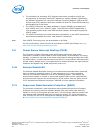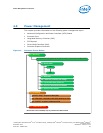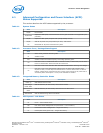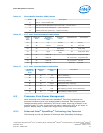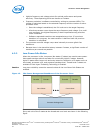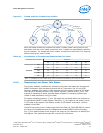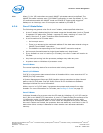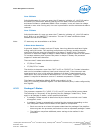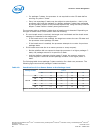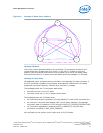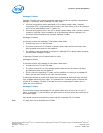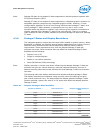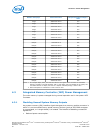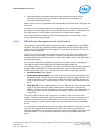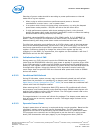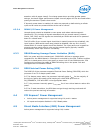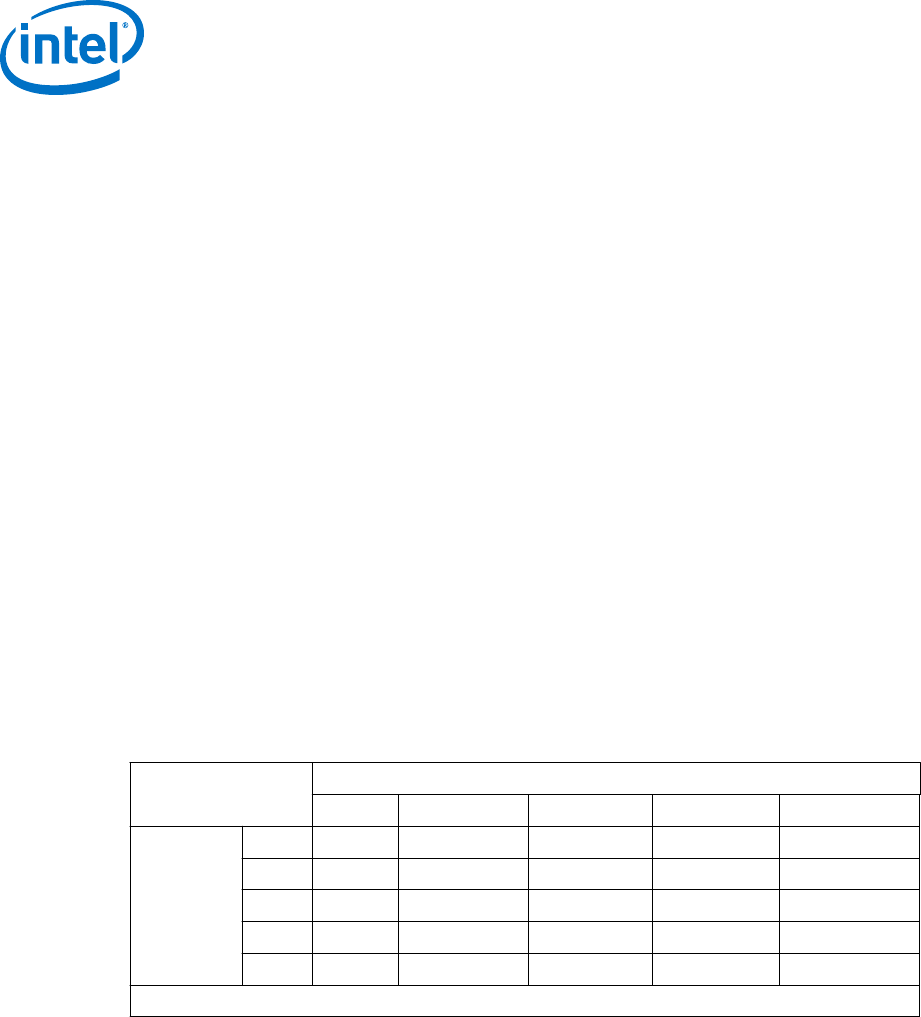
— For package C-states, the processor is not required to enter C0 state before
entering any other C-state.
— Entry into a package C-state may be subject to auto-demotion – that is, the
processor may keep the package in a deeper package C-state than requested
by the operating system if the processor determines, using heuristics, that the
deeper C-state results in better power/performance.
The processor exits a package C-state when a break event is detected. Depending on
the type of break event, the processor does the following:
• If a core break event is received, the target core is activated and the break event
message is forwarded to the target core.
— If the break event is not masked, the target core enters the core C0 state and
the processor enters package C0 state.
— If the break event is masked, the processor attempts to re-enter its previous
package state.
• If the break event was due to a memory access or snoop request,
— But the platform did not request to keep the processor in a higher package C-
state, the package returns to its previous C-state.
— And the platform requests a higher power C-state, the memory access or
snoop request is serviced and the package remains in the higher power C-
state.
The following table shows package C-state resolution for a dual-core processor. The
following figure summarizes package C-state transitions.
Table 19. Coordination of Core Power States at the Package Level
Package C-State Core 1
C0 C1 C3 C6 C7
Core 0
C0 C0 C0 C0 C0 C0
C1 C0 C1
1
C1
1
C1
1
C1
1
C3 C0 C1
1
C3 C3 C3
C6 C0 C1
1
C3 C6 C6
C7 C0 C1
1
C3 C6 C7
Note: 1. If enabled, the package C-state will be C1E if all cores have resolved a core C1 state or higher.
Processor—Power Management
Desktop 4th Generation Intel
®
Core
™
Processor Family, Desktop Intel
®
Pentium
®
Processor Family, and Desktop Intel
®
Celeron
®
Processor Family
Datasheet – Volume 1 of 2 December 2013
56 Order No.: 328897-004



